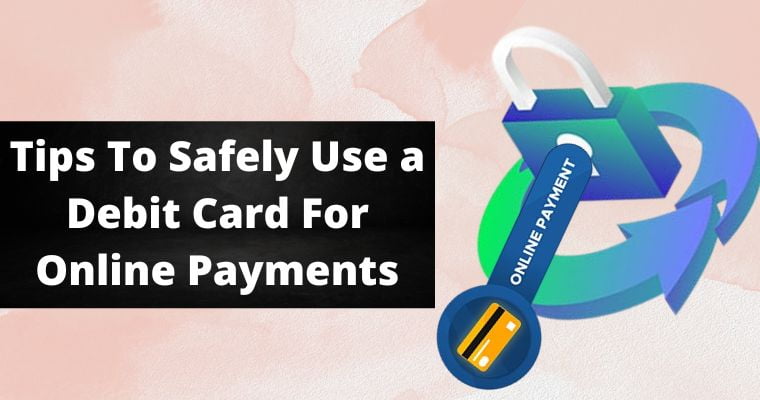Debit cards are a way to pay for things quickly and easily. When you use your debit card, the funds you spend are immediately transferred from your checking account.
This way, you can easily buy things at your favorite store, withdraw money from your bank, or use your debit card to pay for things online. It is significant to keep your debit card safe and secure.
If your debit card is lost or stolen, it may be difficult to use it to make transactions. Additionally, if your debit card is compromised, your bank account may be at risk. So it is important to make sure your debit card is safe and to protect it from theft or other mishaps.
Table of Contents
Benefits of Using a Debit Card
A debit card is a great way to keep your costs low and manage your money. It doesn’t have an annual fee, and it doesn’t have a limit on how much you can spend as some credit cards do.
However, there are some other benefits to using a credit card, such as being able to borrow more money and having more control over your spending.
Overall, it’s a good idea to use a debit card when making an online purchase, but be sure to keep your account information safe and use a secure website.
There are pros and cons to using a debit card online, but the biggest advantage is that you won’t have to pay interest on your debt. The downside is that if your debit card is stolen, your funds may be taken without your knowledge.
Additionally, if you don’t have sufficient money in your account to cover the acquisition, your debit card may be declined, potentially resulting in a financial penalty.
Debit cards allow you to quickly and easily take money out of your checking account, which makes online shopping a safe option, but there is the potential for your information to be stolen if your debit card is used.
If your debit card has been lost or stolen, there are protections in place to prevent fraudulent use. However, you should notify your banking institution if you are using the card online or in person.
There are several rules you should follow to protect yourself while using your debit card, and by following them you can ensure that your transactions are safe.
Some debit cards come with additional protection from the card issuer, so you’re more protected than federal law requires. These services are frequently called “zero liability” protection or a similar name.
14 Tips for Safely Use Debit Card Online
1. Monitor Your Account
It is a good habit to monitor your bank account once a month, and report to the bank if you find any suspicious activity. Also connect your account to mobile banking, online and telephonic banking to stay up to date with alerts.
2. Protect Your PIN
PIN stands for a four-digit security code used to withdraw money from ATMs & to confirm debit card dealings at a store. It’s important to remember your PIN in its place of carrying it in your case or writing it on your debit card, since it can help protect your personal information.
To keep your PIN secure, make sure to keep it in a safe place, like a filing cabinet with a lock. Don’t share it with anyone. Sometimes your PIN will be allocated to your card when you receive it.
If you have to choose a PIN, try to come up with a unique number that is difficult to guess. For example, don’t use a combination of numbers that are easy to remember, like your house number or your birthday.
3. Watch out for security Threats on your PC
A number of malware programs are intended to control the safety vulnerabilities in your operating system & web browser so that they can steal your financial data.
Make sure your web browser and operating system are protected against security vulnerabilities. The anti-virus software will protect against both classified and unclassified attacks on your computer.
Make sure your anti-virus software is up-to-date or has its auto-update feature enabled.
4. Use Secure Connection
Use a web browser that prioritizes security, such as Firefox or Chrome with HTTPS-First mode enabled. Ensure you’re visiting websites with valid SSL certificates (indicated by a padlock icon in the address bar).
When you are using a secure connection, which includes encrypted protocols like HTTPS:// for online transactions and SFTP for file transfers.
But for unsecure connections, it starts with HTTP://. So make sure you are using HTTPS when you are browsing the internet.
5. Signing Your Debit Cards
While signing is not mandatory, some merchants, especially for smaller transactions, might request a signature for verification.
Signing often activates a new debit card, indicating your acceptance of the cardholder agreement, and refusing to sign could lead to declined transactions in some cases, so it is better to do it on the back of the card.
6. Change Your Debit Card PIN Regularly
If you haven’t changed your debit card pin in a while, here’s a reminder to do so. Why? Changing your pin regulary makes it more difficult for fraudsters to determine your PIN, making you less likely to be a victim of debit card information theft.
An excellent rule of thumb is to change your PIN every three to six months. To make sure your account is safe, we recommend setting a password that is not easily accessible on your social media profiles.
This will help defend your personal information from being stolen, and will also allow you to access your account easily if needed.
7. Using Bank ATMs Only
Bank ATMs are generally more secure than independent ATMs as they are more likely to be under surveillance and maintained by the bank itself, minimizing the risk of skimming devices being installed.
8. Debit Card Protection Measures
Unlike credit cards, debit cards offer less robust fraud protection. Federal law limits your liability to $50 if you report a lost or stolen card within 2 business days. However, if you take longer, you could lose your entire account balance.
Some banks offer zero liability policies that cover all unauthorized transactions, regardless of reporting time. Check your bank’s terms and conditions for details.
9. Use a Digital Wallet
Digital wallets offer a convenient and secure way to ditch your physical debit card for everyday purchases. Choose a digital wallet app like Apple Pay, Google Pay, Samsung Pay, or PayPal.
Download and install it on your smartphone or smartwatch. Follow the app’s instructions to add your debit card. This usually involves entering your card details or scanning it with your phone’s camera. Set a PIN or enable fingerprint/face unlock for secure access.
10. Try to Use credit cards for online shopping
There is a warning for all online shoppers: Make sure you use a credit card when shopping online, not a debit card. Debit cards are linked to your bank account, which makes them extremely risky.
Credit cards are less likely to be abused than debit cards, since it is relatively easy to dispute fraudulent charges on a credit card, compared to recovering money taken out from a debit card.
These days, people are using once-use credit cards for online shopping. These cards are specifically designed for online shopping.
11. Sign Up for Two-Factor Authentication
To make an online transaction, you need to provide your debit card number, card verification number (CVC), and expiration date. This is one way to make sure you’re really doing the transaction with that card.
To make your banking experience more secure, you can sign up for a two-step authentication process. With this feature, you’ll receive an One Time Password (OTP) to help you verify your identity whenever you make transactions.
12. Avoid Public Wi-Fi
Many public Wi-Fi networks lack encryption, making your data easily accessible to hackers. They can intercept your login credentials, and other sensitive data as it travels between your device and the website. Public Wi-Fi is a risky way to make transactions.
To keep your transactions safe, only make purchases when connected to a secure Wi-Fi network, and be especially careful shopping online.
13. Shop Trusted Merchants
Protecting your debit card information while shopping online is crucial. When you search the web for a specific item, you will see results for purchasing that item. However, it is best to stick with merchants that you already know and trust.
Research unfamiliar companies before making a purchase especially if the price seems too good to be true – it could be a phishing scam designed to lure you in with an offer and then steal your payment information.
14. Sign Up for Mobile Alerts
The first step to preventing debit card fraud is noticing any unusual transactions. You can do this by looking at your monthly account statement, which will show you all of your monthly expenses. The only problem is that it’s too late to report this activity to your bank once it’s happened.
Sign up for mobile alerts so you can be notified whenever there is an account activity, such as a transfer of money. This will help you identify any unusual activity right away and report it to your bank. This will help you block the card, preventing any further loss of funds from your account.
Final words
If you’re using a debit card frequently, it’s important to be aware of the potential risks and take some preventative measures. Debit cards can be drained if someone has access to your bank account, so being aware of your account and taking steps to protect it can be helpful.



